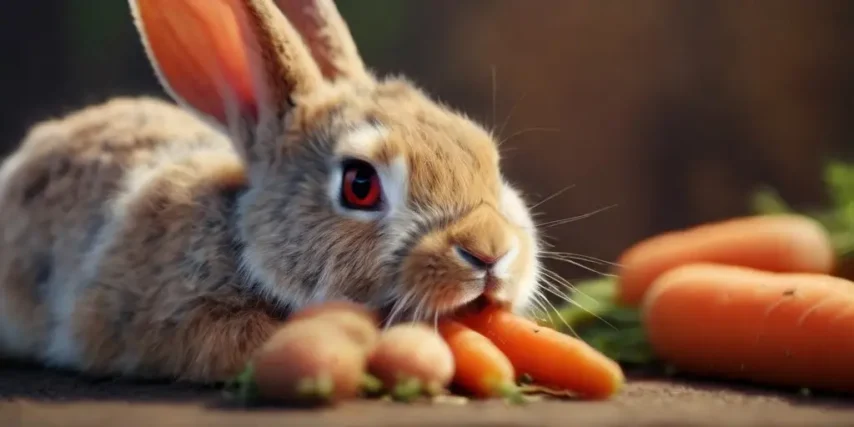The Enigmatic Affair Between Rabbits and Carrots: Unraveling the Roots of a Nutritious Love Story
In the realm of iconic animal-food relationships, few are as widely recognized and celebrated as that between rabbits and carrots. The image of a fluffy bunny nibbling on a crisp orange carrot has become synonymous with innocence, health, and perhaps even a touch of whimsy. But what lies beneath this seemingly simple association? Why do rabbits love eating carrots? Join us on a fascinating journey as we delve into the roots of this nutritious love story and uncover the symbiotic connection between these two seemingly unrelated entities.
Historical Perspectives:
The enigmatic connection between rabbits and carrots can be traced back through the annals of history. Contrary to popular belief, the origin of this relationship is not rooted in animated tales or children’s books but is rather grounded in a fascinating interplay of biology and agriculture.
Carrots, native to the Middle East and Asia, were initially cultivated for their aromatic leaves and seeds rather than their tuberous roots. It was only during the medieval period in Europe that the cultivation of carrots for their sweet, crunchy roots gained popularity. The orange pigment, beta-carotene, not only gives carrots their vibrant color but also plays a crucial role in promoting good vision and a healthy immune system.

Rabbits, on the other hand, have been domesticated since ancient times, initially for their fur and later as companion animals. These herbivores have a specialized digestive system designed for breaking down fibrous plant material. The combination of a herbivorous diet and their need for essential nutrients makes rabbits particularly inclined towards vegetables, with carrots emerging as a favored choice.
Nutritional Harmony:
The love affair between rabbits and carrots goes beyond mere aesthetics. Carrots, rich in vitamins A and K, as well as various minerals, provide a nutritious boost to a rabbit’s diet. Vitamin A is crucial for maintaining good vision and a healthy coat, while vitamin K supports blood clotting and bone health. The fibrous nature of carrots also aids in maintaining proper dental health for these furry creatures.
However, it is essential to note that while rabbits do enjoy the occasional carrot as a treat, their primary diet should consist of hay, fresh greens, and specially formulated pellets to ensure a well-balanced intake of nutrients. Too many carrots can lead to an excess of sugar in a rabbit’s diet, potentially causing digestive issues and obesity.
Chewing for Health:
One of the most captivating aspects of the rabbit-carrot connection lies in the physical act of chewing. Rabbits have a natural instinct to chew, not only to grind down their constantly growing teeth but also to engage in a vital form of enrichment. Carrots, with their satisfying crunch, provide the perfect outlet for this instinct.
In the wild, rabbits spend a significant portion of their day foraging for food, and domesticated rabbits benefit from activities that mimic this natural behavior. Offering a rabbit a carrot not only provides nutritional benefits but also encourages physical activity and mental stimulation, contributing to their overall well-being.

Cultural Symbolism:
The association between rabbits and carrots has permeated popular culture, becoming a symbol of health, vitality, and innocence. From beloved animated characters like Bugs Bunny to timeless tales featuring Peter Rabbit, the image of a rabbit enjoying a carrot has become a cultural touchstone.
In literature and folklore, carrots are often portrayed as a source of magic or good fortune, adding to the mystique of this seemingly ordinary vegetable. The cultural symbolism surrounding rabbits and carrots further cements their status as an iconic duo, transcending the realms of reality and fiction.

The love affair between rabbits and carrots is a multifaceted tale that intertwines history, nutrition, and cultural symbolism. Beyond the charming imagery of a bunny munching on a carrot, there lies a deeper connection rooted in the biological needs of these adorable creatures and the nutritional benefits offered by this humble vegetable.
As we unravel the layers of this nutritious love story, it becomes evident that the relationship between rabbits and carrots is not just a whimsical fancy but a harmonious dance between nature and nurture. So, the next time you witness a rabbit relishing a crisp, orange carrot, appreciate the intricate web of history and biology that brought these two unlikely companions together in a tale as old as time.







